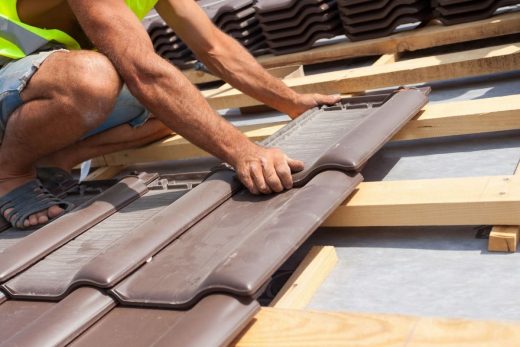How to protect your roof from storm damage guide, USA property roofing work durability advice
How to Protect Your Roof from Storm Damage
11 September 2024
Your roof is one of the most vital parts of your home, acting as the first line of defense against Mother Nature. Storms can wreak havoc on your roof, leading to costly repairs and potential damage to the interior of your home. Fortunately, there are several proactive steps you can take to safeguard your roof from the next big storm. In this article, we’ll discuss some effective strategies for storm-proofing your roof and ensuring it stays in top shape.
Clean Gutters and Downspouts
Clogged gutters and downspouts can lead to water pooling on your roof, increasing the risk of leaks and water damage during a storm. Regularly clean your gutters and downspouts to ensure they are free of debris. This will help water flow away from your roof, reducing the risk of damage.
Regular Roof Inspections
One of the most important steps in protecting your roof from storm damage is conducting regular inspections. At least twice a year, take the time to examine your roof for any signs of wear and tear. Look for loose shingles, cracks, or any other visible damage.
If you’re not comfortable doing this yourself, hiring a professional inspector is a wise investment. Regular inspections can help identify potential issues before they become major problems. Regular inspections can also help you determine the right time to get reliable roof repairs if any issues are found. This preventative approach can save you money and stress in the long run, ensuring your roof remains strong and secure.
Secure Loose Items
Outdoor furniture, garden tools, and other loose items can become dangerous projectiles during a storm. These items can hit your roof, causing significant damage. Before a storm hits, make sure to secure or store any loose items in your yard. This simple step can make a big difference in protecting your roof.
Trim Overhanging Branches
Trees are a beautiful addition to any property, but they can also pose a risk to your roof during a storm. Overhanging branches can break off and damage your roof, or even puncture it. Trim branches that are too close to your house, ensuring they are at least six feet away from your roof. This will not only protect your roof but also reduce the risk of pests getting onto your roof.
Reinforce the Roof Structure
Reinforcing the structure of your roof can provide an extra layer of protection against storm damage. Consider adding hurricane straps or clips, which help hold the roof to the walls of your home more securely. Additionally, inspecting and potentially upgrading the roof decking can add strength and durability. Consult a roofing professional to explore the best options for reinforcing your roof.
Install Storm Shutters
While storm shutters are typically associated with protecting windows, they can also help protect your roof. High winds can create pressure imbalances that cause the roof to lift off the house. Storm shutters help equalize this pressure, reducing the risk of roof damage. Consider installing storm shutters, particularly if you live in a hurricane-prone area.
Address Roof Ventilation
Proper roof ventilation plays a vital role in maintaining the structural integrity of your roof. During a storm, trapped heat and moisture can cause your roof to become more susceptible to damage. Ensure that your attic has enough airflow to prevent the buildup of moisture, which can weaken the roof structure and lead to costly repairs over time.
Choose Storm-Resistant Materials
If you’re considering a roof replacement or building a new home, opt for storm-resistant roofing materials. Metal roofs, for example, can withstand high winds and are less likely to suffer damage compared to traditional asphalt shingles. Similarly, impact-resistant shingles are designed to hold up better under the stress of heavy winds and hail. Investing in these materials can significantly enhance your roof’s durability.
Create an Emergency Roof Repair Kit
Having an emergency roof repair kit on hand can be invaluable if your roof sustains damage during a storm. This kit should include items such as tarps, roofing nails, a hammer, a utility knife, and roofing adhesive. In the aftermath of a storm, these materials can help you make temporary repairs to prevent further damage until professional help arrives.
Install a Roof Underlayment
Adding a roof underlayment provides an additional layer of protection for your home. This moisture barrier is installed directly onto your roof deck before shingles are laid down. It helps prevent water from seeping into your home in case your shingles are damaged or blown away during a storm. A quality underlayment can significantly reduce the risk of leaks and water damage.
Protecting your roof from storm damage doesn’t have to be a daunting task. By conducting regular inspections, trimming overhanging branches, securing loose items, and considering storm-resistant materials, you can significantly reduce the risk of storm-related damage. Remember that a little prevention can go a long way in keeping your roof— and your home— safe during the next big storm. Stay proactive, and your roof will continue to serve as a reliable shield against whatever weather comes your way.
Comments on this guide to How to protect your roof from storm damage article are welcome.
Roofing Contractor
Roofing Replacement Posts
6 questions to ask when hiring residential roofing contractor

First Time Replacing Your Roof
Types of Roofing Materials: Explained
Building Articles
Residential Architecture
Comments / photos for the How to protect your roof from storm damage – home roofing repair firm page welcome.




